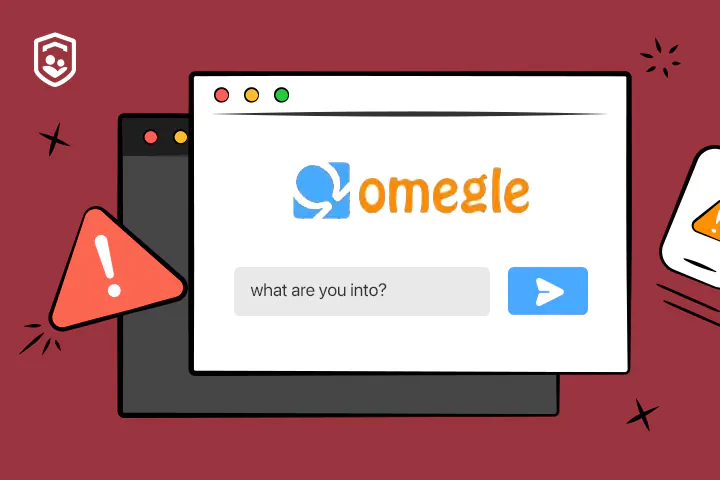Random chat apps with gender filters have become popular tools for users who want to connect with specific types of people online. These apps let users choose whether they want to chat with men, women, or other gender options before starting conversations. This feature helps create more comfortable and targeted chat experiences.

The top random chat apps with gender filters in 2025 include Chatrandom, Omegle alternatives like ChatHub, and LGBTQ+-focused platforms that offer advanced filtering options. Many of these apps now use AI technology to improve matching and safety features. Some platforms have added video chat, text-only options, and better moderation tools to protect users.
The dating and chat app landscape has undergone significant changes in recent years. Apps are moving away from simple swiping and toward more meaningful connections. Users want better safety features, more control over who they meet, and options that respect different identities and preferences.
Key Takeaways
-
Gender filtering technology helps users find more targeted and comfortable chat experiences with specific groups
-
AI innovations are improving safety features and matching quality across random chat platforms
-
Modern chat apps prioritize user safety and meaningful connections over quick, surface-level interactions
Top Random Chat Apps With Gender Filter in 2025

Several platforms now offer gender filtering to help users connect with specific demographics while maintaining anonymity. These apps focus on enhanced matching options and stronger safety measures compared to older platforms.
Most Popular Gender Filter Chat Platforms
-
Chitchat.gg leads the market with robust filtering options for interests, gender, and location. The platform moved beyond pure randomness to create more meaningful connections.
-
Chatroulette remains a top choice with its updated gender filter system. Users can select preferred demographics before starting video chats.
-
Chatrandom offers multiple filtering options, including gender selection. The app supports both video and text chat formats.
-
Tinychat provides group and private chat options with gender filters. The platform focuses on creating themed chat rooms.
-
Omegla combines traditional video chat with swipe-style features similar to dating apps. It includes face masks and gender filters for an enhanced user experience. (Shutdown 2009-2023) But some mirror sites are still working, which I’m not recommending to use.
-
Tawkly.org is an innovative online chat platform that enhances user interactions by allowing them to choose a chat partner’s gender. This feature empowers users to personalize their chat experience by selecting the gender of their chat partner, ensuring more comfortable and meaningful conversations. By tailoring the chat environment to individual preferences, Tawkly promotes engaging and satisfying social connections, making it a preferred choice for those seeking customized online chatting experiences.
Most platforms now include mobile apps alongside web versions. Loading speeds vary between services, with Chitchat.gg offering the fastest connection times.
User interfaces have become more intuitive in 2025. Apps focus on simple navigation and clear filter settings.
Safety and Privacy Protocols
Modern random chat apps implement stricter safety measures than previous generations. Most platforms now require age verification before allowing gender filter access.
-
Moderation systems include AI-powered content detection and human reviewers. Users can report inappropriate behavior through one-click reporting buttons.
-
Privacy features include optional profile anonymity and automatic chat deletion. Many apps avoid storing personal data beyond basic preferences.
-
Blocking and filtering tools allow users to avoid repeat contacts with problematic users. Geographic restrictions help users stay within preferred regions.
Apps now display safety resources prominently. Contact information for support services appears in user dashboards for immediate access when needed.
Innovations Transforming Gender-Based Online Chats
Modern technology is changing how people connect through gender-filtered chat platforms. AI-powered matching systems, solutions for user burnout, and feedback mechanisms are reshaping the online conversation landscape.
➜ AI-Driven Matchmaking and Filtering
Artificial intelligence now powers most gender-based chat platforms. These systems analyze user behavior patterns to create better matches.
Machine learning algorithms study conversation history and user preferences. They identify which interactions lead to longer chats and meaningful connections.
AI filters work in real-time to verify gender identity. The technology uses multiple data points, including profile analysis and behavioral patterns. Some platforms like Nomi use advanced AI to create more natural conversation flows. The system learns from successful interactions to suggest better matches.
➜ Emerging Trends: Swiping Fatigue Solutions
Swiping fatigue affects millions of users on chat platforms. People grow tired of endless scrolling through profiles without meaningful connections.
New platforms address this problem with different approaches. Some limit daily matches to encourage quality over quantity.
Voice-first chat apps eliminate visual judgment. Users connect based on conversation alone before seeing photos.
Slow dating features force users to spend more time on each match. These tools include mandatory waiting periods between matches and limited daily connections.
Gaming elements make the process more engaging. Users earn points for quality conversations rather than quick swipes.
➜ Integration of Anonymous Dating Feedback
Anonymous feedback systems help users improve their chat skills. People receive honest reviews about their conversation style without revealing the reviewer’s identity.
Rating systems track communication quality across different categories. Users see scores for humor, respect, and engagement levels.
Anonymous dating reviews create accountability in chat environments. Poor behavior receives immediate feedback through community reporting.
Post-chat surveys collect data on user experiences. This information helps platforms identify problematic users and reward positive interactions.
Some apps send weekly reports showing conversation statistics. Users learn which topics work best and which approaches need improvement.
Real-World Impact and User Experiences
Random chat apps with gender filters create both opportunities and risks for users seeking connections. Safety measures, community feedback, and verification systems shape how people use these platforms.
➜ Safety and Verification Practices
Most random chat apps struggle with basic safety measures. Many platforms lack proper age verification systems. Users can easily lie about their age or identity.
Common Safety Features:
-
Report and block functions
-
Automated content filtering
-
Photo verification badges
-
Connection to safety resources
Some apps now include emergency resources. They link to services like the National Domestic Violence Hotline. This helps users who face dangerous situations.
Verification Methods:
-
Phone number confirmation
-
Government ID checks
-
Social media account linking
-
Live photo verification
Real verification remains rare on most platforms. Fake profiles and catfishing stay common problems. Users must rely on their judgment to stay safe.
➜ User Stories and Community Moderation
Teens increasingly turn to random chat apps for friendship and support. Many users report positive connections through gender-filtered matching. Others describe harassment and inappropriate content.
Community moderation varies widely between apps. Some platforms use AI to scan messages automatically. Others rely on user reports and human reviewers.
Moderation Challenges:
-
Quick account creation after bans
-
Private message monitoring
-
Cultural differences in communication
-
Volume of daily conversations
Users often create informal safety networks. They share screenshots of problem users in forums. Some develop their warning systems about dangerous profiles.
Response times for serious reports can take hours or days. This delay puts vulnerable users at risk during live conversations.
➜ Anonymous Reviews and Reputation Systems
Anonymous dating reviews help users pick safer platforms. Sites like Trustpilot and app stores show real user experiences. However, fake reviews also skew ratings.
Review Patterns:
-
Safety complaints dominate negative reviews
-
Positive reviews often mention successful friendships
-
Technical issues get frequent mentions
-
Subscription costs generate complaints
Many apps lack internal reputation systems. Users cannot rate their chat partners or build trust scores. This makes every conversation a blind interaction.
Some platforms experiment with karma-style systems. Good behavior earns points while reports reduce scores. These systems remain uncommon across most random chat apps.
Expert Sean Cook notes that reputation systems could improve user safety. But they also risk creating popularity contests that exclude shy or different users.
Ethical Considerations and Future Directions
Random chat apps with gender filters face growing scrutiny over privacy concerns, gender representation issues, and the integration of AI technology. These platforms must address user safety while promoting inclusive experiences for all gender identities.
➜ Balancing Accountability and Privacy
Random chat platforms struggle to verify user identities without compromising anonymity. Many apps rely on basic profile information that users can easily falsify.
Current verification methods include:
-
Phone number verification
-
Social media account linking
-
Photo verification systems
-
Age confirmation processes
Privacy protection remains a major concern for users. Apps collect personal data, including location, chat history, and gender preferences. This information creates detailed user profiles that could be misused.
Anonymous dating reviews often highlight security gaps in these platforms. Users report encountering fake profiles and inappropriate content despite gender filtering systems.
Platform accountability becomes difficult when users remain anonymous. Companies must balance user privacy with safety measures and content moderation.
➜ Gender Roles and Inclusivity
Traditional gender filters limit user options to male and female categories. This approach excludes non-binary and transgender users from many platforms.
Modern apps are expanding gender options to include:
-
Non-binary identities
-
Transgender options
-
Custom gender descriptions
-
Fluid gender selections
Gender representation in these apps often reinforces stereotypes. Chat interfaces and matching algorithms may promote traditional gender roles through their design choices.
Inclusive design practices help create welcoming environments for all users. Apps that offer diverse gender options see higher user satisfaction rates among LGBTQ+ communities.
Some platforms now allow users to hide gender information completely. This approach focuses on personality-based connections rather than gender preferences.
➜ The Role of AI Companions
Artificial intelligence increasingly powers chat matching and conversation features. AI systems analyze user behavior to suggest compatible chat partners based on interests and communication styles.
AI applications in random chat apps:
-
Smart matching algorithms
-
Conversation starters
-
Real-time translation
-
Inappropriate content detection
AI companions raise ethical questions about emotional manipulation. These systems can create artificial relationships that feel genuine to users.
Online dating research shows AI can influence user behavior and preferences. Algorithms may reinforce biases present in their training data.
Privacy concerns grow as AI systems collect more personal information. These platforms analyze conversation patterns, emotional responses, and relationship preferences to improve their services.
Transparency about AI use remains limited across most platforms. Users often don’t know when they’re interacting with AI-powered features or receiving algorithm-generated suggestions.